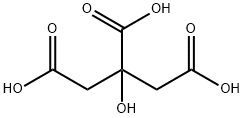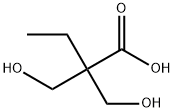2-Bromo-3-methylbutyric acid
Synonym(s):α-Bromoisovaleric acid;2-Bromoisovaleric acid
- CAS NO.:565-74-2
- Empirical Formula: C5H9BrO2
- Molecular Weight: 181.03
- MDL number: MFCD00004210
- EINECS: 209-291-0
- SAFETY DATA SHEET (SDS)
- Update Date: 2024-12-18 14:08:57

What is 2-Bromo-3-methylbutyric acid?
Chemical properties
WHITE TO BEIGE CRYSTALLINE POWDER OR CHUNKS
The Uses of 2-Bromo-3-methylbutyric acid
2-Bromo-3-methylbutyric acid was used to study the conjugation of glutathione (GSH) with (R)-and (S)-α-bromoisovaleric acid (BI) in the rat 1 .
The Uses of 2-Bromo-3-methylbutyric acid
2-Bromo-3-methylbutyric acid has been used in the preparation of optically active N-methylvalines.
General Description
Mechanism of action of methylamine on optically active 2-bromo-3-methylbutyric acid has been investigated.
Properties of 2-Bromo-3-methylbutyric acid
| Melting point: | 39-42 °C(lit.) |
| Boiling point: | 124-126 °C20 mm Hg(lit.) |
| Density | 1.4210 (rough estimate) |
| refractive index | 1.4790 (estimate) |
| Flash point: | 107°C |
| solubility | alcohol: soluble(lit.) |
| form | Crystalline Powder or Chunks |
| pka | 3.00±0.10(Predicted) |
| color | White to beige |
| Merck | 14,1422 |
| BRN | 1721146 |
| Dielectric constant | 6.5(20.0℃) |
| CAS DataBase Reference | 565-74-2(CAS DataBase Reference) |
| NIST Chemistry Reference | Butanoic acid, 2-bromo-3-methyl-(565-74-2) |
| EPA Substance Registry System | Butanoic acid, 2-bromo-3-methyl- (565-74-2) |
Safety information for 2-Bromo-3-methylbutyric acid
| Signal word | Danger |
| Pictogram(s) |
 Corrosion Corrosives GHS05  Exclamation Mark Irritant GHS07 |
| GHS Hazard Statements |
H314:Skin corrosion/irritation |
| Precautionary Statement Codes |
P260:Do not breathe dust/fume/gas/mist/vapours/spray. P270:Do not eat, drink or smoke when using this product. P280:Wear protective gloves/protective clothing/eye protection/face protection. P301+P312:IF SWALLOWED: call a POISON CENTER or doctor/physician IF you feel unwell. P303+P361+P353:IF ON SKIN (or hair): Remove/Take off Immediately all contaminated clothing. Rinse SKIN with water/shower. P305+P351+P338:IF IN EYES: Rinse cautiously with water for several minutes. Remove contact lenses, if present and easy to do. Continuerinsing. |
Computed Descriptors for 2-Bromo-3-methylbutyric acid
| InChIKey | UEBARDWJXBGYEJ-UHFFFAOYSA-N |
2-Bromo-3-methylbutyric acid manufacturer
aSai Vishwa Speciality Chemicals Pvt Ltd
1Y
Phone:+919920410867
Whatsapp: +91-9920410867
product: 565-74-2 2-Bromoisovaleric acid 98%
New Products
Tert-butyl bis(2-chloroethyl)carbamate (S)-3-Aminobutanenitrile hydrochloride N-Boc-D-alaninol N-BOC-D/L-ALANINOL N-octanoyl benzotriazole 4-Hydrazinobenzoic acid 3,4-Dibenzyloxybenzaldehyde 1,1’-CARBONYLDIIMIDAZOLE R-2-BENZYLOXY PROPIONIC ACID 1,1’-CARBONYLDI (1,2-4 TRIAZOLE) 4-HYDROXY BENZYL ALCOHOL 3-NITRO-2-METHYL ANILINE (2-Hydroxyphenyl)acetonitrile 4-Bromopyrazole 5-BROMO-2CYANO PYRIDINE 5,6-Dimethoxyindanone 5-broMo-2-chloro-N-cyclopentylpyriMidin-4-aMine 4-methoxy-3,5-dinitropyridine 2-(Cyanocyclohexyl)acetic acid 2-aminopropyl benzoate hydrochloride 1-(4-(aminomethyl)benzyl)urea hydrochloride tert-butyl 4- (ureidomethyl)benzylcarbamate diethyl 2-(2-((tertbutoxycarbonyl)amino) ethyl)malonate Ethyl-2-chloro((4-methoxyphenyl)hydrazono)acetateRelated products of tetrahydrofuran








You may like
-
 565-74-2 2-Bromoisovaleric acid 98%View Details
565-74-2 2-Bromoisovaleric acid 98%View Details
565-74-2 -
 2-Bromo-3-methylbutyric Acid CAS 565-74-2View Details
2-Bromo-3-methylbutyric Acid CAS 565-74-2View Details
565-74-2 -
 2-Bromo-3-methylbutyric acid CAS 565-74-2View Details
2-Bromo-3-methylbutyric acid CAS 565-74-2View Details
565-74-2 -
 55441-95-7 99%View Details
55441-95-7 99%View Details
55441-95-7 -
 N-Vinylformamide 99%View Details
N-Vinylformamide 99%View Details
13162-05-5 -
 Chloro Uracil 1820-81-1 99%View Details
Chloro Uracil 1820-81-1 99%View Details
1820-81-1 -
 2-ethyl-6-methyl-3-hydroxypyridine succinate 99%View Details
2-ethyl-6-methyl-3-hydroxypyridine succinate 99%View Details
127464-43-1 -
 2-ETHYLPYRIDINE 100-71-0 99%View Details
2-ETHYLPYRIDINE 100-71-0 99%View Details
100-71-0
Statement: All products displayed on this website are only used for non medical purposes such as industrial applications or scientific research, and cannot be used for clinical diagnosis or treatment of humans or animals. They are not medicinal or edible.